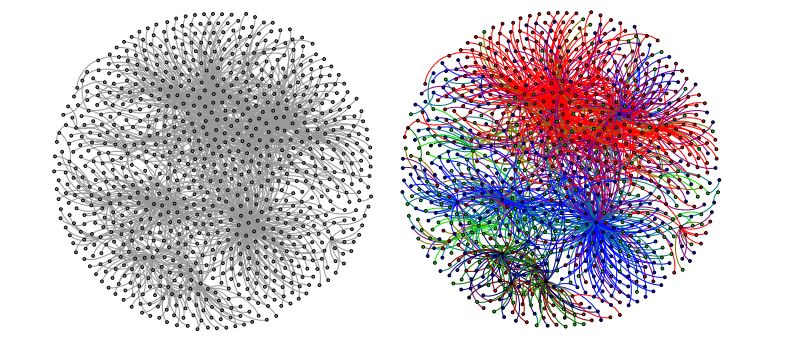Most Influential Emotions on Social Networks Revealed
One well-known feature of social networks is that similar people tend to attract each other: birds of a feather flock together.

So an interesting question is whether these similarities cause people to behave in the same way online, whether it might lead to flocking or herding behaviour, for example.
Today, we get an interesting insight into this phenomena thanks to the work of Rui Fan and pals at Beihang University in China. These guys have compared the way that tweets labelled with specific emotions influence other people on the network.
And their conclusion is surprising. They say the results clearly show that anger is more influential than other emotions such as joy or sadness, a finding that could have significant implications for our understanding of the way information spreads through social networks.
These guys got their data from Weibo, a Twitter-like service that has become hugely popular in China. In just four years, it has attracted more than 500 million users who post around 100 million messages a day.
During six months in 2010, Rui and co collected some 70 million tweets from 200,000 users and constructed a social network in which users are linked if they mutually interact by sending messages to each other or retweeting each other’s tweets, for example.
To ensure that they only studied people who were strongly connected, Rui and co only included people who had more than 30 interactions during the test period.
Next, they determined the sentiment of each tweet in their database by analysing the emoticons they contained. They divided these into four categories, expressing joy, sadness, anger or disgust.
Finally, they studied the way sentiments spread through the network. For example, if one person sent an angry tweet, how likely was it that a recipient would also send an angry message, and how likely was it that the recipient of this message would pass on the same sentiment and so on?
The results were something of a surprise. When it comes to sadness and disgust, Rui and co found very little correlation between users. Sadness and disgust do not easily spread through the network in this way. They found a higher correlation among users who tweeted joyful messages.
But the highest correlation by far was among angry users. Rui and co say anger strongly influences the neighbourhood in which it appears, spreading on average by about 3 hops or degrees. “Anger has a surprisingly higher correlation than other emotions,” they say.
That has significant implications. Not least of these is that anger is more likely to spread quickly and broadly across a network.
Indeed, Rui and co confirmed this by studying the content of many of the angry tweets they had collected. They say that two kinds of events seem to trigger angry messages.
The first are conflicts between China and foreign countries, such as the military activities of the US and South Korea in the Yellow Sea and a collision in September 2010 between a Chinese and Japanese ship.
The second are domestic social problems like food security, government bribery and the demolition of homes for resettlement; all hot topics in China. “This can explain why the events related to social problems propagate extremely fast in Weibo,” say Rui and co.
Of course, it would be interesting to see whether the same effect can be observed in western networks such as Twitter. That should be relatively straightforward to find out given the growing interest in sentiment analysis and the increasingly effective tools available to carry it out.
The moral of the story is that when it comes to the spread of information, anger is more powerful than other emotions.
So if you want to spread your message, let that inner rage out.
Ref: arxiv.org/abs/1309.2402: Anger is More Influential Than Joy: Sentiment Correlation in Weibo
Keep Reading
Most Popular
Large language models can do jaw-dropping things. But nobody knows exactly why.
And that's a problem. Figuring it out is one of the biggest scientific puzzles of our time and a crucial step towards controlling more powerful future models.
The problem with plug-in hybrids? Their drivers.
Plug-in hybrids are often sold as a transition to EVs, but new data from Europe shows we’re still underestimating the emissions they produce.
Google DeepMind’s new generative model makes Super Mario–like games from scratch
Genie learns how to control games by watching hours and hours of video. It could help train next-gen robots too.
How scientists traced a mysterious covid case back to six toilets
When wastewater surveillance turns into a hunt for a single infected individual, the ethics get tricky.
Stay connected
Get the latest updates from
MIT Technology Review
Discover special offers, top stories, upcoming events, and more.